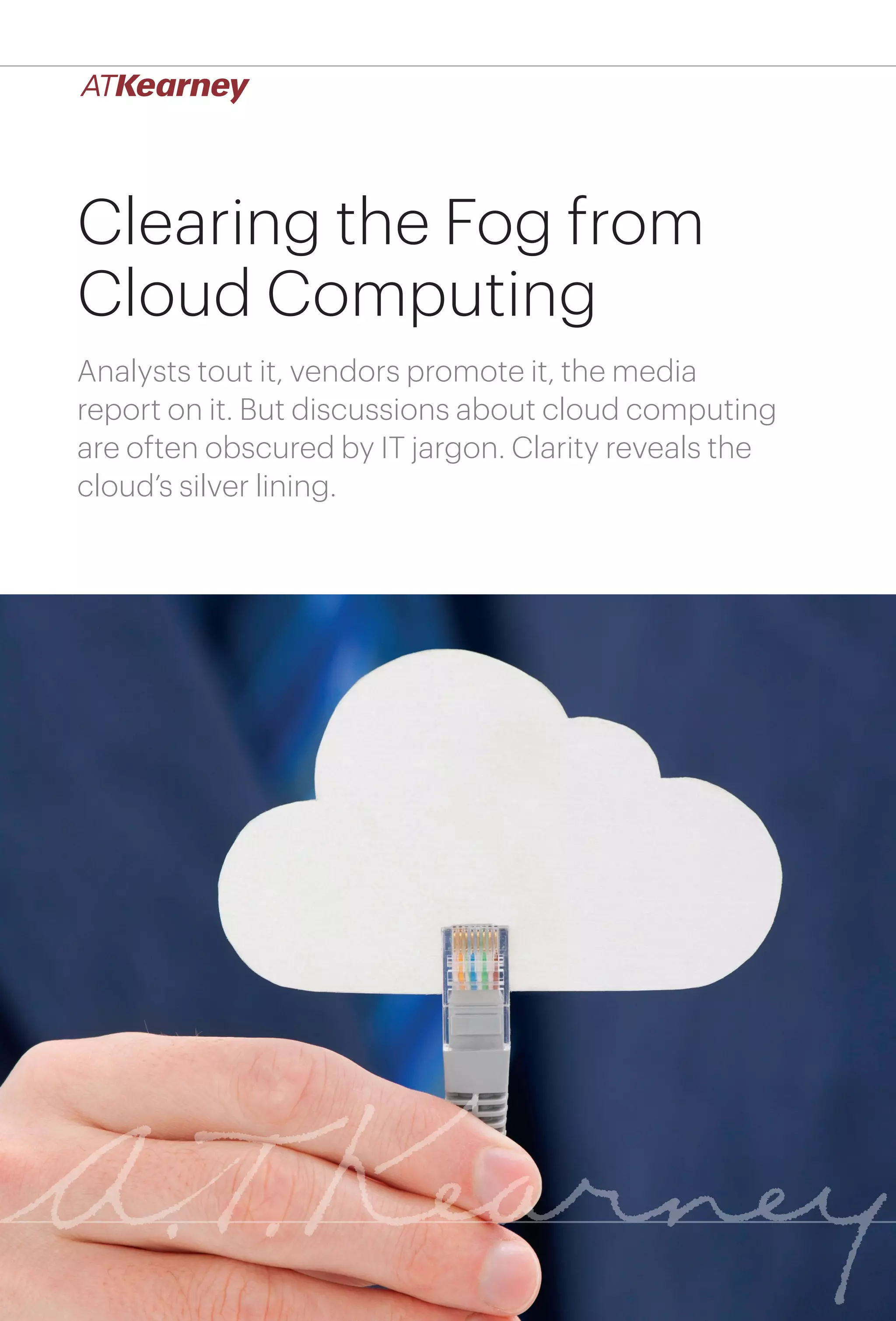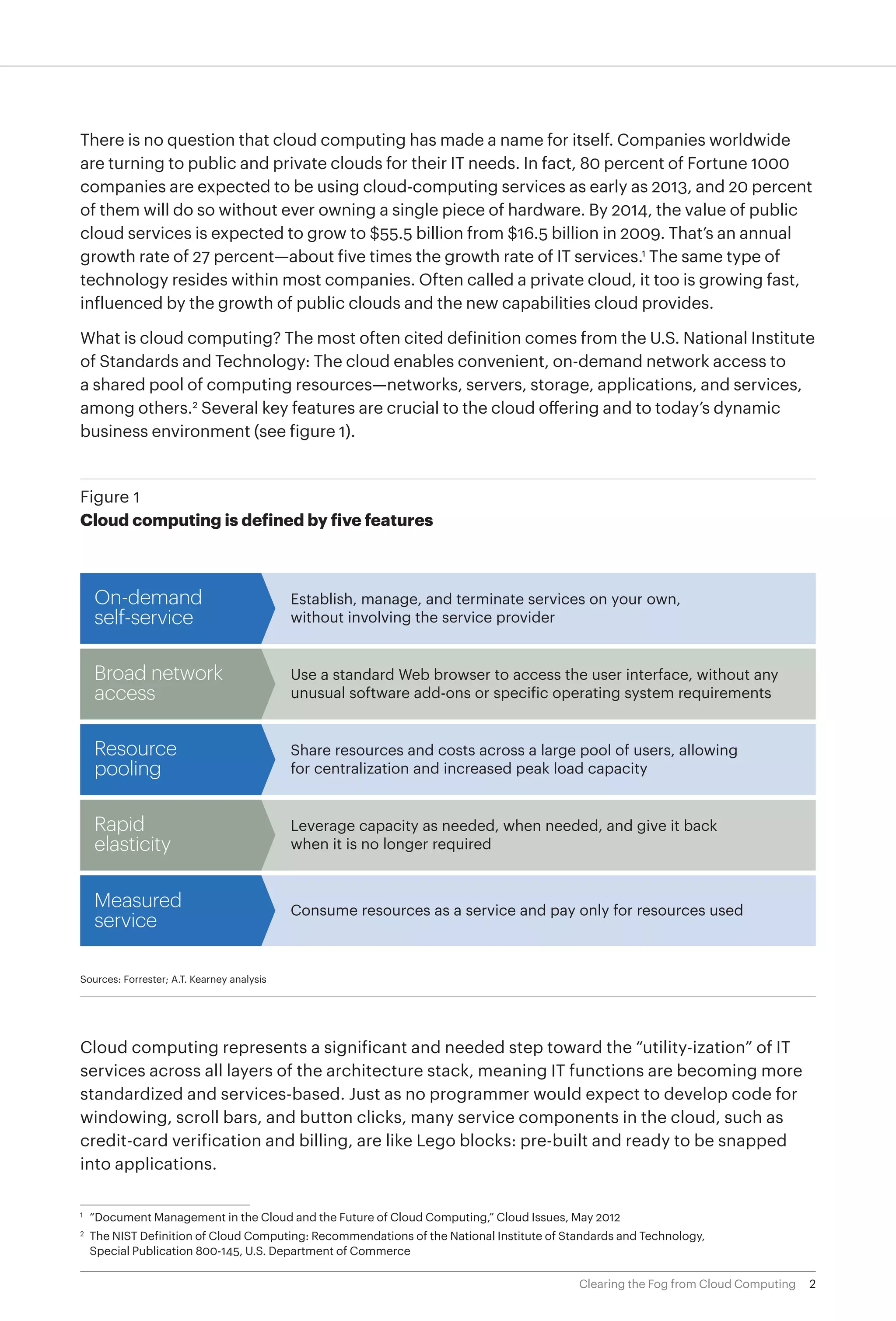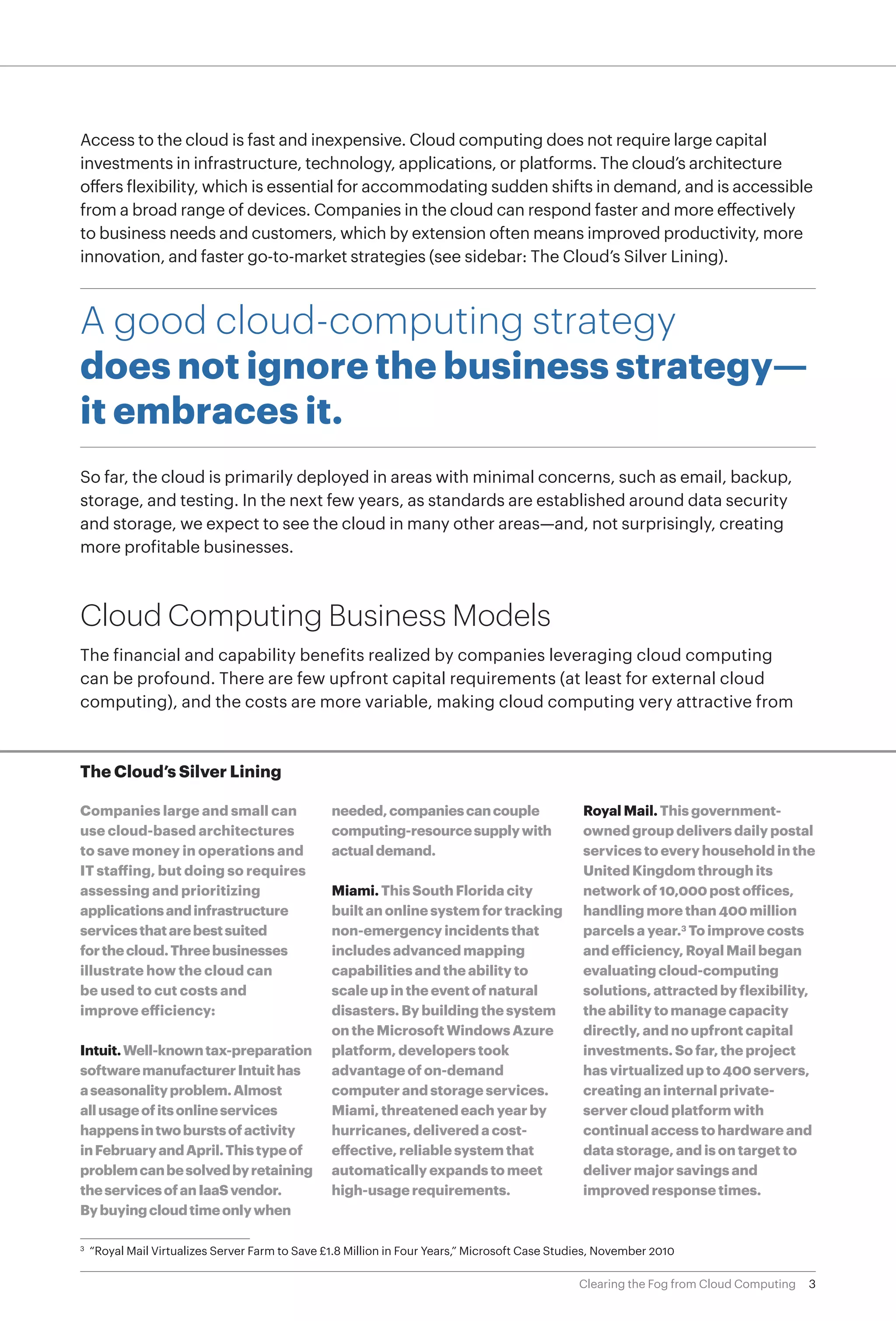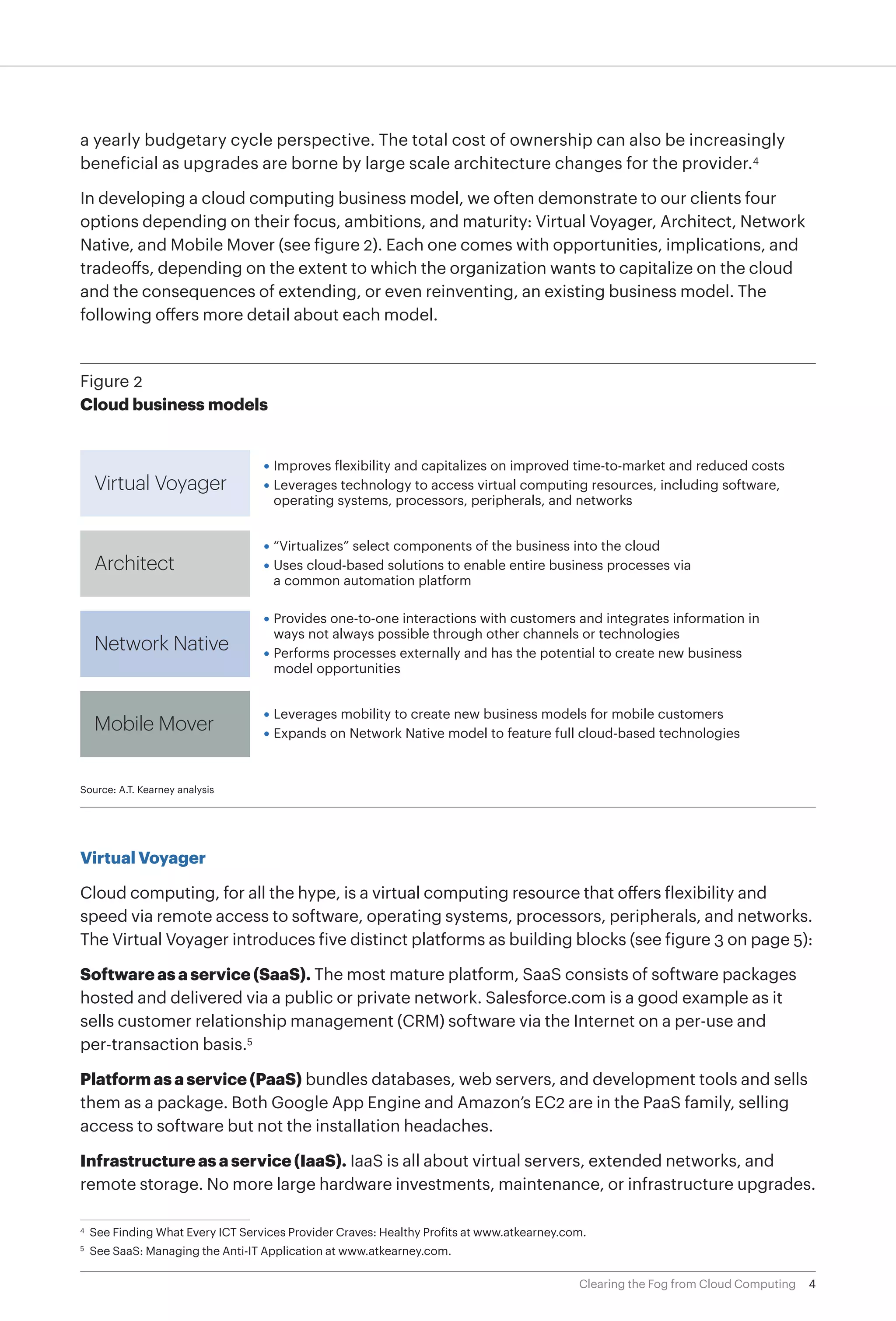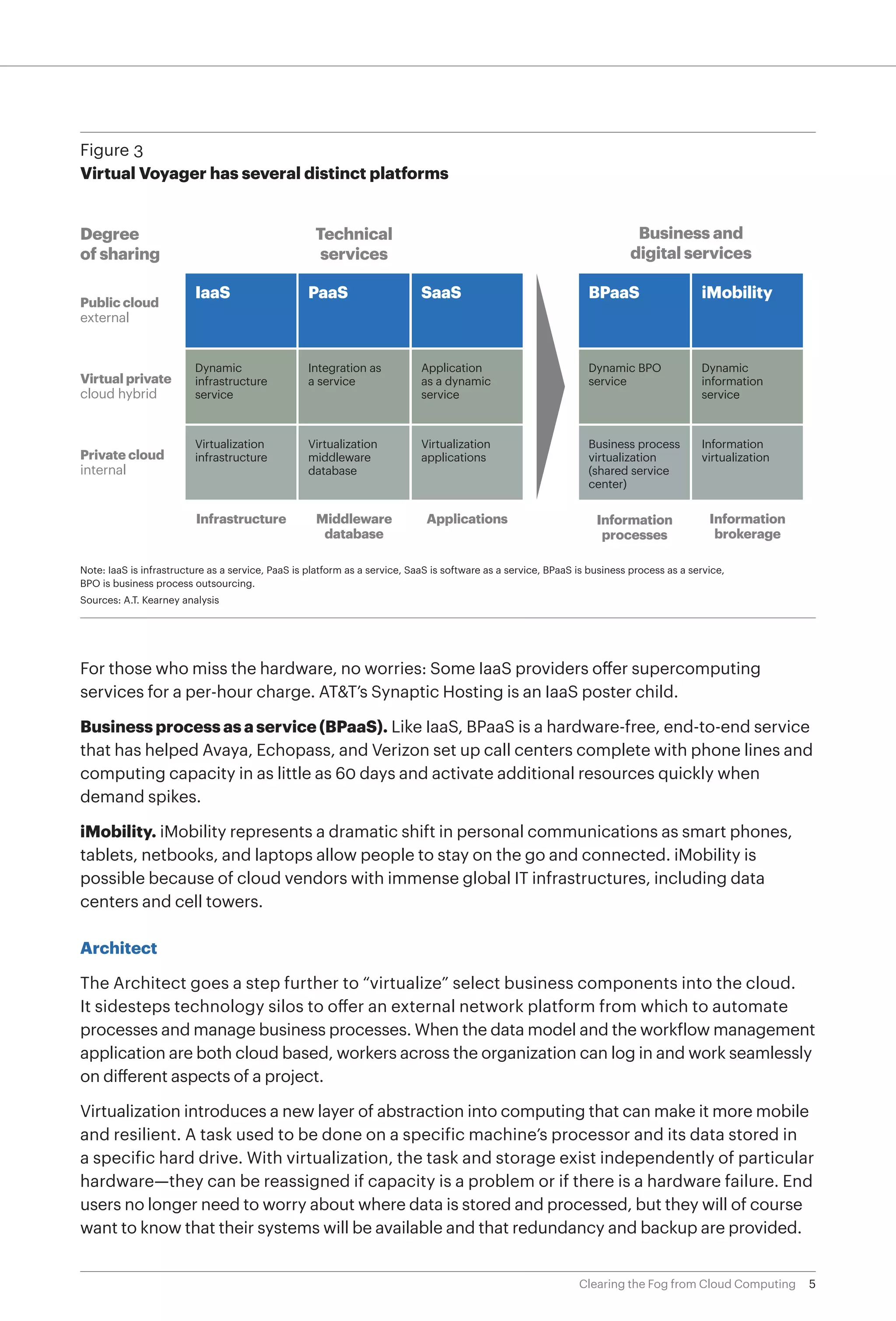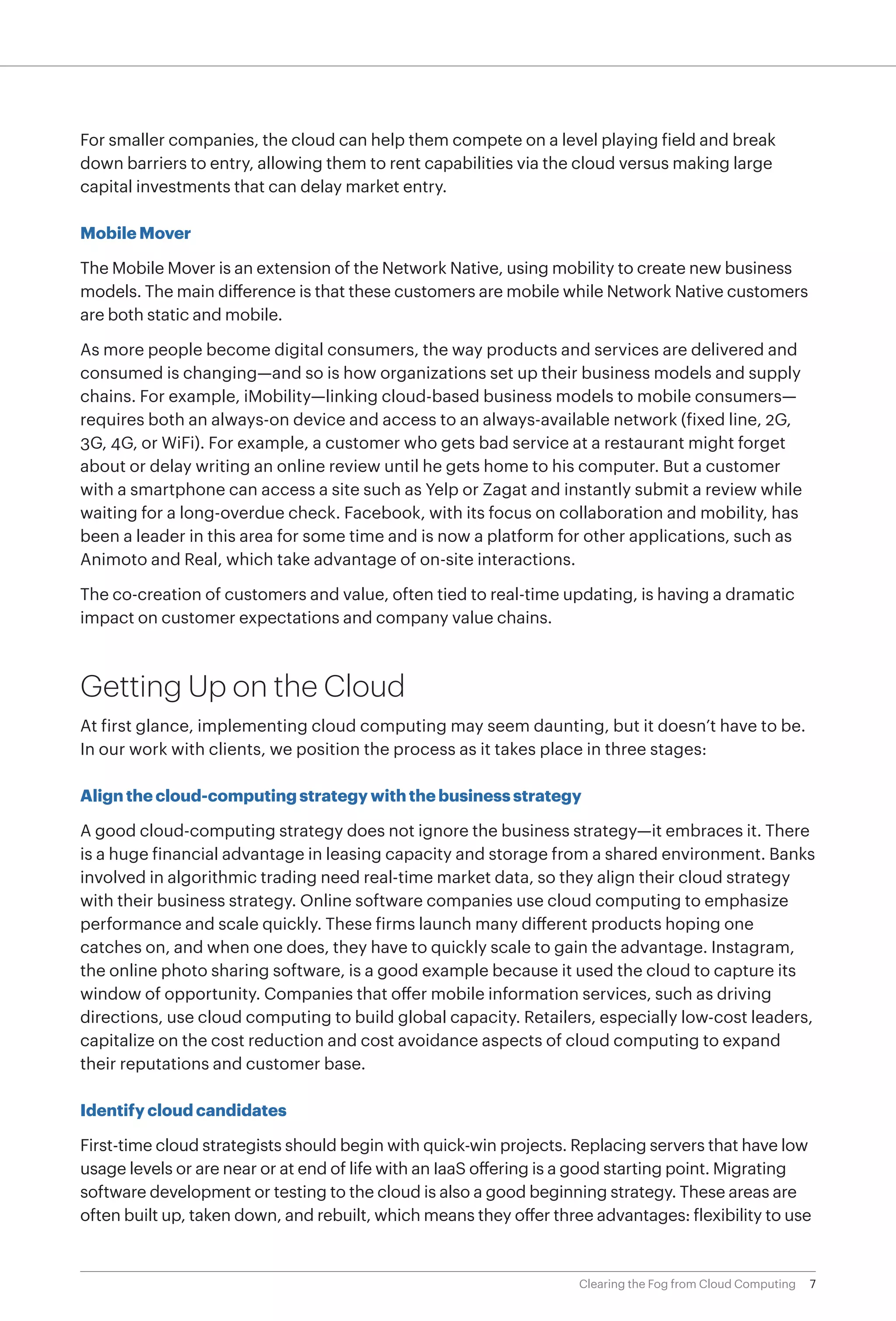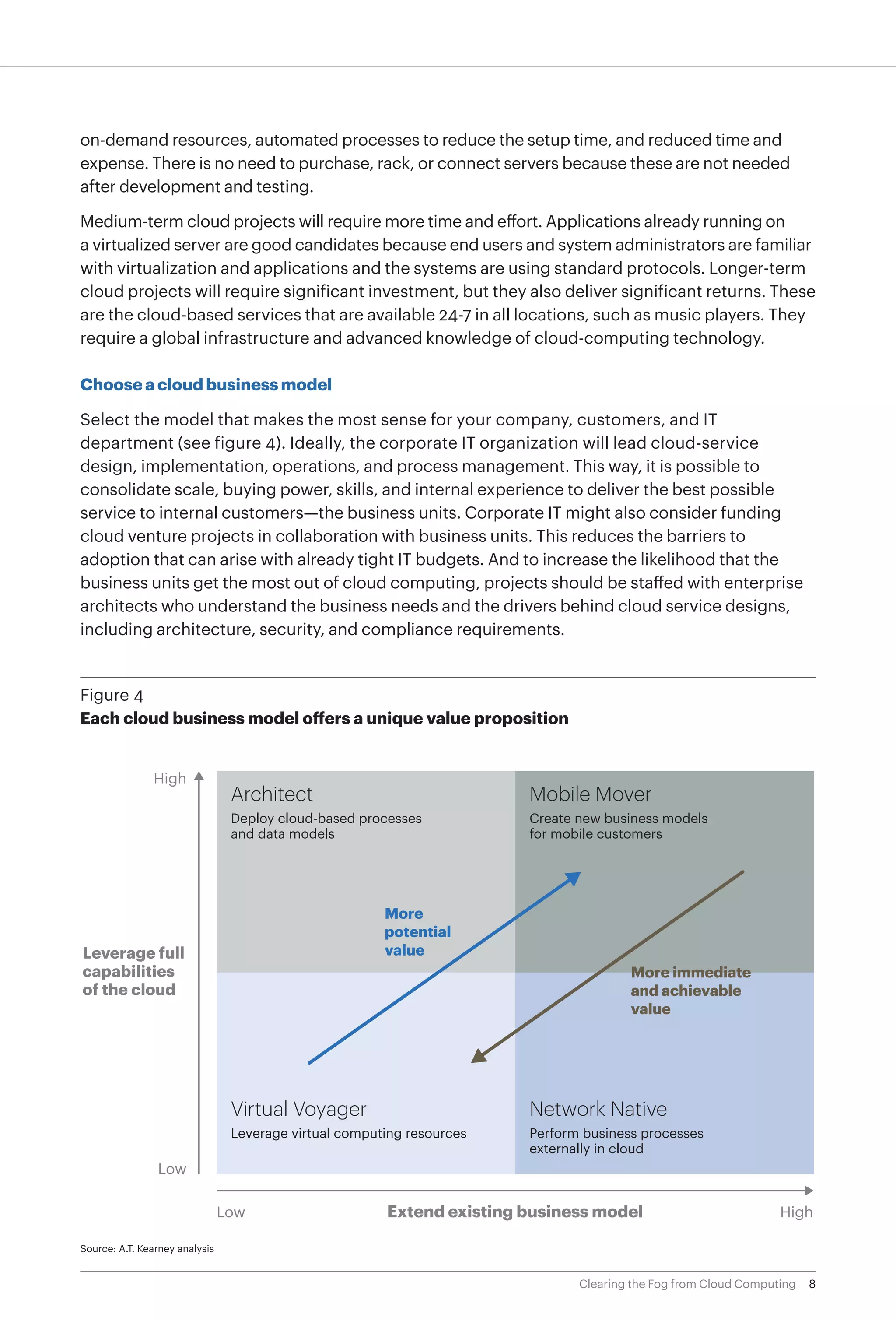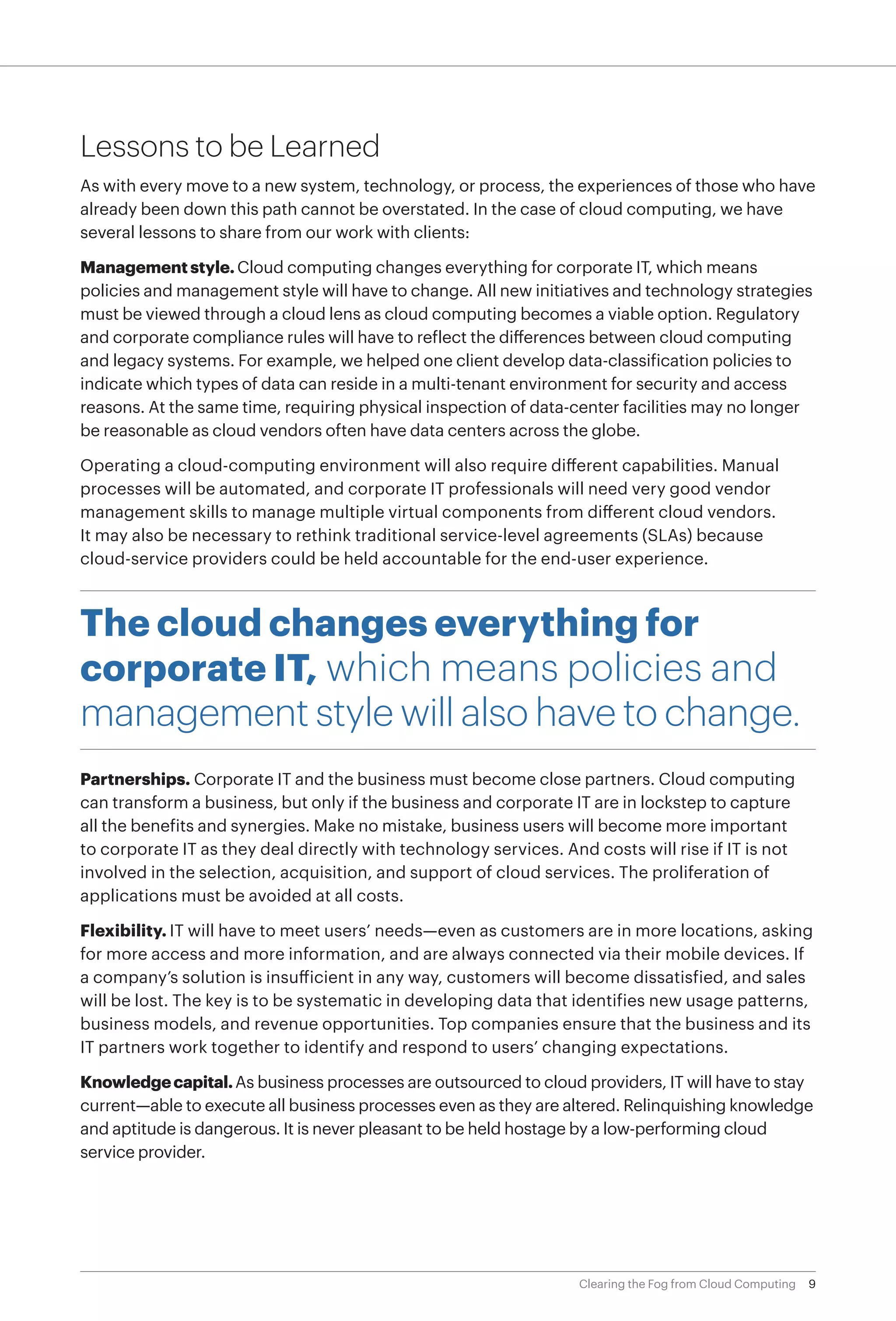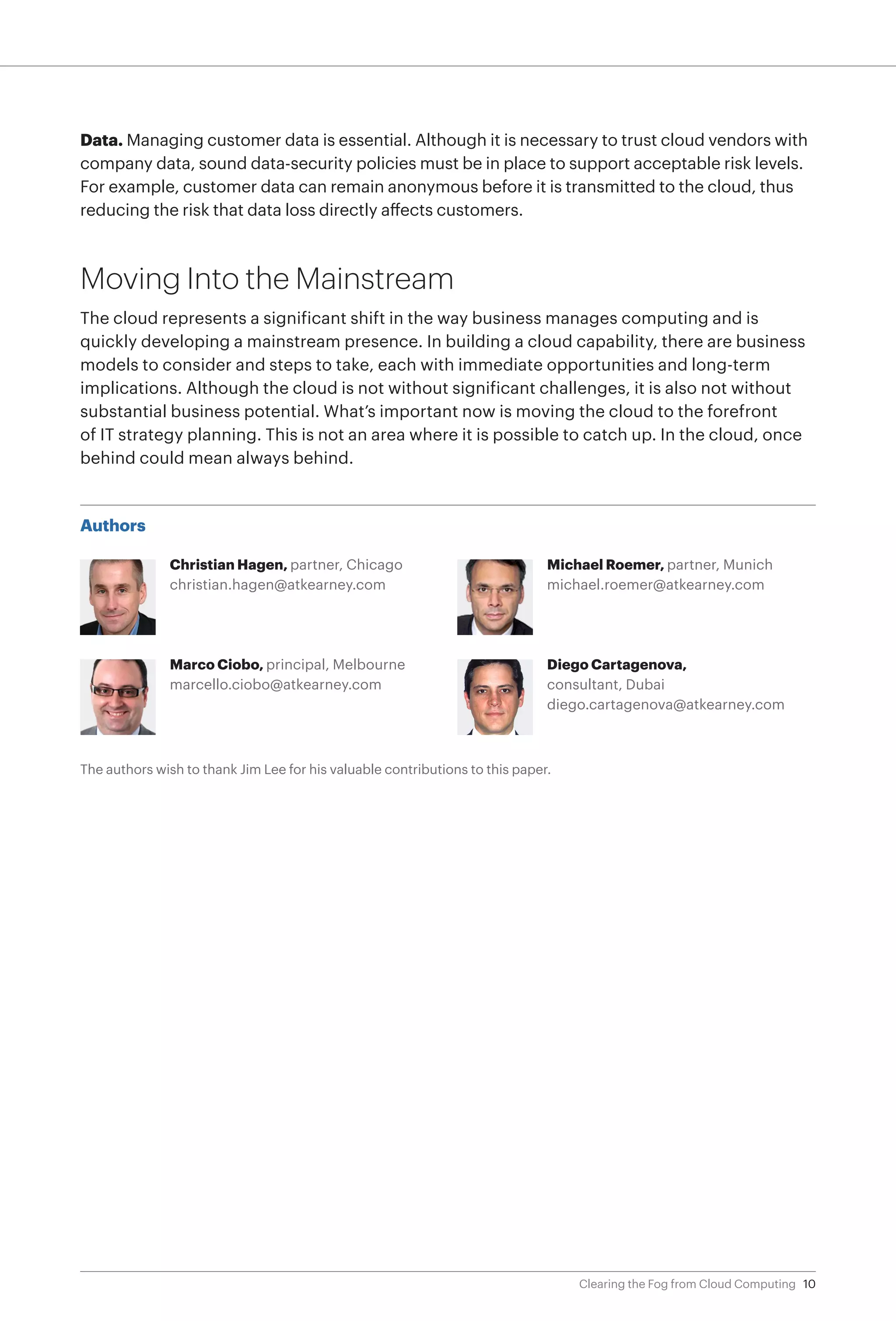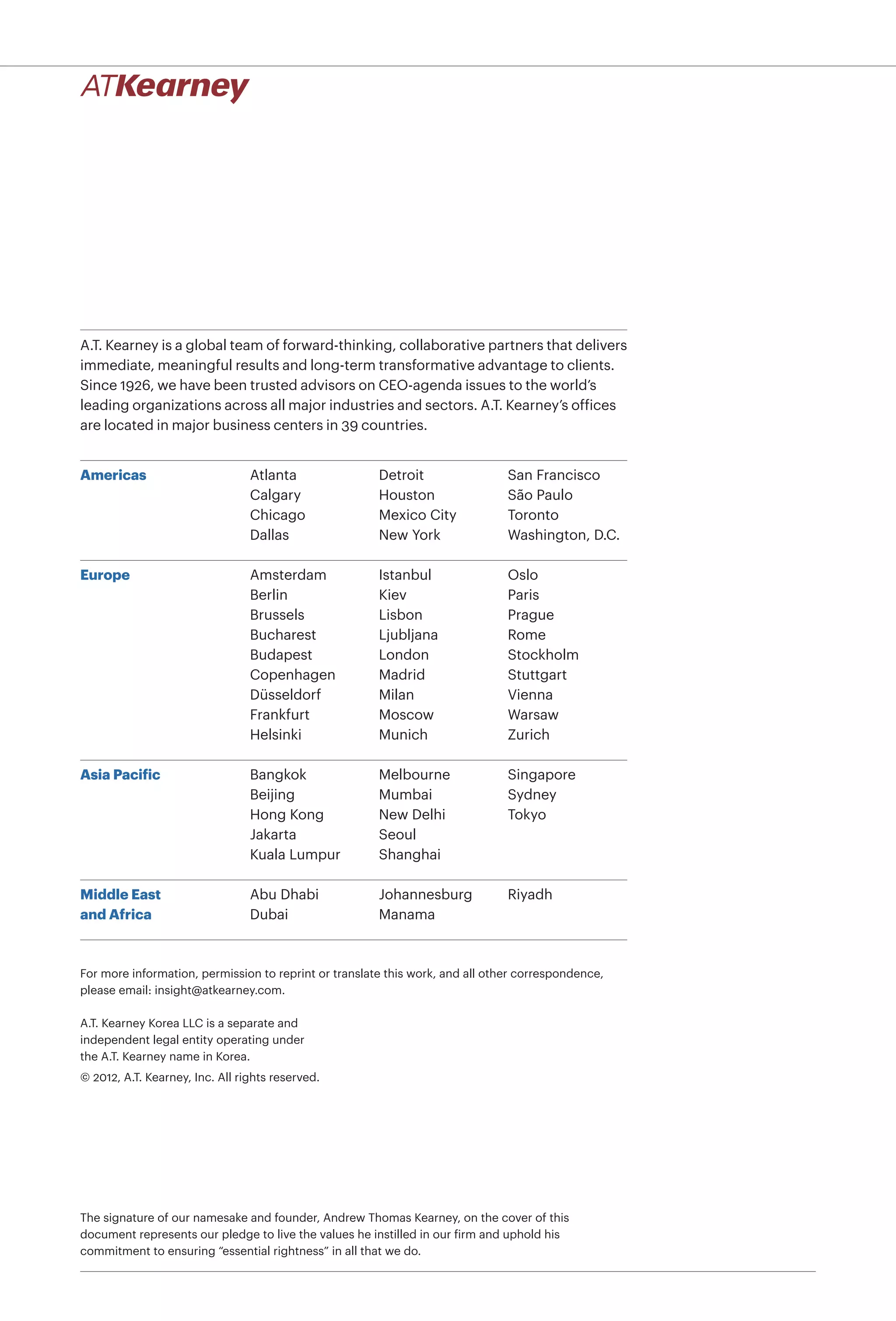This document discusses cloud computing and provides definitions and examples. It makes the following key points:
1) Cloud computing allows on-demand access to shared computing resources like servers, storage, databases and applications over the internet.
2) Major benefits include reduced upfront costs, flexibility to scale resources up or down as needed, and a pay-per-use model.
3) Examples show how companies use cloud computing to save costs, improve efficiency and flexibility, and develop new business models.
